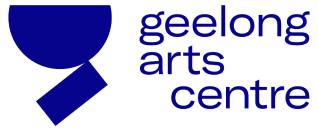Transdisciplinary Research Process
METHODOLOGICAL FRAMEWORK
The research aims to develop alternative methodologies and solutions to improve human-building interaction applied in the context of an Arts Centre building and it is anticipated to make a significant contribution to existing knowledge of Human Building Interaction (HBI). The project brings together diverse and complementary expertise in Integral Design, Architecture & Built Environment, Ambient Intelligence, Interaction and Game Design, Human-Computer Interaction, and Artificial Intelligence applied to buildings.
Research Through Design
The research aims to develop alternative methodologies and solutions to improve human-building interaction applied in the context of an Arts Centre building and it is anticipated to make a significant contribution to existing knowledge of Human Building Interaction (HBI). The project brings together diverse and complementary expertise in Integral Design, Architecture & Built Environment, Ambient Intelligence, Interaction and Game Design, Human-Computer Interaction, and Artificial Intelligence applied to buildings.
Application of Design Thinking
Our design approach is based on Design Thinking methodology, which advocates a learning style biased towards action. Design Thinking builds upon the belief that once all available facts and research have been gathered and understood, the best way to explore the solution space is to create tangible bounded experiments as soon as possible instead of trying to first assemble all interpretations and hypotheses into a comprehensive, detailed but abstract solution concept. This experimentational attitude advocates an iterative and agile approach, which requires the team members to stay open-minded, conscious of multiple options and pathways, and always willing to explore alternatives. This attitude avoids the risks of jumping to conclusions too quickly. In this project, we adapted Dan Nassler’s interpretation (Figure 2) of the Double Diamond Diagram, which has specifically been tailored for Human-Centred Design and UX (user experience) principles.
Application of Mixed Research Methods for Data collection
To achieve the desired outcome, the team utilised multiple research data collection methods: qualitative user interviews (GAC staff interviews), desk research, user observation / ethnography, and co-creative workshops.
Approach to Innovation through Transdisciplinarity
Transdisciplinarity is a relatively new form of problem-solving involving cooperation among different parts of society and academia to meet the complex challenges of society. In this project, we have focused on the complex real-world challenges within the context of a cultural institution and the solutions proposed have been developed in close collaboration with multiple stakeholders. In summary, our transdisciplinary approach to research in this project has the following key characteristics:
- it aims to contribute to societal transformation (rather than contributing to any particular scientific discipline),
- it uses experimental designs as core research method,
- it has a long-term orientation and seeks scalability, and transferability of results, and
- it is built on learning and reflexivity.

Adopted from Nessler, D. (2016). How to apply a design thinking, HCD, UX or any creative process from scratch — digital experience design’, 19 May. Available at: https://medium.com/digital-experiencedesign/how-to-apply-a-design-thinking-hcd-ux-or-any-creative-process-from-scratchb8786efbf812#s2us112ys (Accessed: 15 November 2016).
